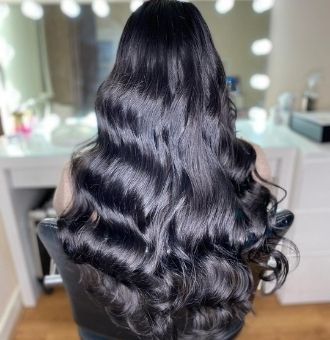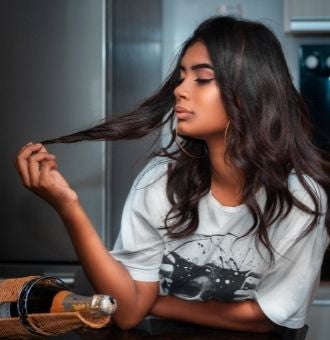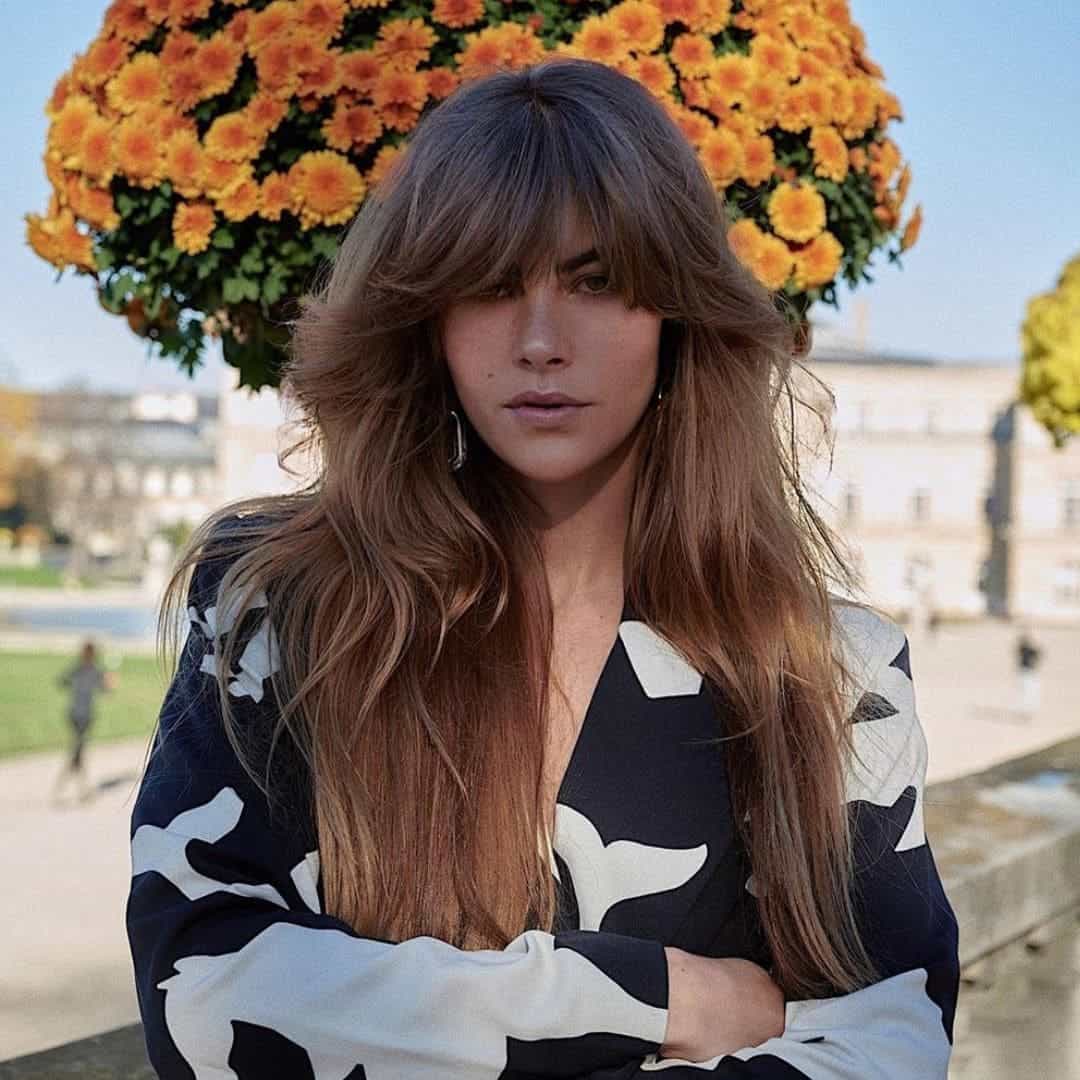
The Hidden History of Wigs and Hair Extensions
The Hidden History of Wigs and Hair Extensions

Human’s age-old obsession with beauty has seen the invention and refinement of make-up through to fashion. Why should hair be any different? In countless cultures, hair is seen as a traditional symbol of health and beauty. One of (wo)man’s earliest beauty accessories, luscious locks have always been desirable. And what comes hand-in-hand with great hair? Great hair extensions and wigs. The history of wigs and hair extensions is a path less trodden, so let’s delve into the past and discover where the secrets to great hair originated. Hint: it’s a VERY long time ago.
INDEX
- The Secrets Of Ancient Egyptian Hair
- African Hair Braiding
- Ancient Greek, Assyrian, Phoenician And Roman Hair
- The Rise Of Elizabethan And Victorian Hair
- 1950s Hair Pieces
- Modern Hair Extensions: 1960s Hair Styles
- Hair Extensions of Today
The Secrets of Ancient Egyptian Hair

Rewind to 3400 BC, the reign of the Pharaohs. Ancient Egyptian hair represented a hierarchy of status, and the beautification process was treasured in the upper-class communities. Ancient Egyptians braided wigs manufactured from human hair and sheep’s wool. Think Cleopatra’s famous jet-black braided bob. Wigs were adorned with hair beads and tassels, intricately braided, and often held with beeswax (Ancient Egypt’s take on hairspray.) Dyed vivid colors and embellished with precious gems, ancient Egyptian wigs would be splashes of primary color against the sands of the desert landscape.
Subsequently, the only individuals who could afford these luxuries were members of the higher classes, excluding male Pharaohs who usually sported cropped hair styles and favoured elaborate headpieces instead. Despite the unattainable luxuries of wigs, working class Egyptians took additional measures to ensure this standard of beauty was upheld. A female body from a working-class grave dated around 3500 BC had evidence of hair dye (henna was used to color grey hair) and hair weaving (locks of human hair were tied to natural objects to produce an elaborate beehive hairdo).
African hair braiding

Two women with hairstyles made of braided sinew (eefipa). Mbalantu, Wambo group, Namibia, 1940s. Photo: M. Schettler.
After the alleged first use of hair extensions in Ancient Egypt, the techniques rapidly spread throughout the rest of Africa. Hair was used by different tribes to indicate social hierarchy, as well as expressing fertility. Long thick tresses signalled the owner was able to bear healthy children. For centuries, hair braiding techniques in Africa have included hair extensions of some sort, with the materials used distinct to the tribal region itself. One example includes the Mbalantu of Wambo group of Namibia utilising sinew hair extensions to construct braids that reached their ankles!
Ancient Greek, Assyrian, Phoenician and Roman Hair

Apart from the Ancient Egyptians, other ancient civilisations that experimented with wigs were the Greeks, Romans, Assyrians, and the Phoenicians. The history of wigs in Rome was especially rather dark, with the elite class manufacturing wigs from the hair of slaves. Roman women tended to wear overly elaborate wigs that made a statement. Although natural appearing wigs were worn, upper classes preferred to wear distinctly manmade designs. These wigs were fashioned with braids of bright, contrasting colors, and styled to maximise the volume and visual impact of the wig itself.
The Rise of Elizabethan and Victorian Hair

The Elizabethan Era saw women using wigs hair pieces to parade the latest fashion of the time: extremely high, frizzy hair. Queen Elizabeth I herself intensified this trend with her signature tightly curled, bright red wig. Elizabethan wigs were usually manufactured with inexpensive sheep or horses’ hair. No wonder they were so frizzy!
Fast forward to the 18th century. Artificial and elaborate hairstyles defined European fashion at this point, men and women alike sported extravagant head pieces to embody wealth and status. Some historians date the resurgence of wigs to the king of France, Louis Xlll, who went prematurely bald. By disguising his baldness with wigs fit for a king he inadvertently created a cult following of the European upper-class, with an extravagant explosion of glorious wigs spreading throughout Europe.
Women of the Victorian and Georgian Eras’ (1830s – 1910s) were a major market for hair switches, see: additional hair pieces temporarily added to hair. Most women did not have the amount of hair required for the popular intricate updos of the time. As a result, the UK alone imported 102 tonnes of hair during this period to be made into “switches” – the original clip in hair extensions.
1950s Hair Pieces

Hair pieces were At the start of the 20th century, women would use hairpins or some type of a foundation tool to help mould the switch into an intricate shape. The 1950s in particular was a popular time for hair pieces, used to add definition and volume to classic updo hairstyles. The chignon bun presented a prime opportunity for women to wear detachable hair pieces for parties and events.
Check our blog on Hairstyles through the decades to give you some serious 20th century vintage inspo.
Modern Hair Extensions: 1960s Hair Styles

The 60s saw the introduction of the modern hair extensions we know and love. Finally! Iconic hair styles like the Beehive saw women opting for semi-permanent hair extensions to rival Brigitte Bardot’s famous look. The hair weave was actually invented in 1951 by an African American woman named Christina Jenkins. Manufactured by its namesake process of weaving, her patent describes the process as ‘interweaving strands of live hair and strands of commercial hair, with cord-like material to permanently join the strands thereto…’
Modern hair extensions favoured synthetic materials until the 1990s, following which human hair options became more readily available. Just look at the options available today...
Hair Extensions of Today

Today, women (and men) enjoy a myriad of semi-permanent and temporary hair extensions, with a range of real and synthetic options. Our ancestors understood the importance of hair, and now you do too! If you’re intrigues by the wonders of hair extensions, or just want to browse the options available, check out our complete range of products today.
Did this ‘The Hidden History of Wigs and Hair Extensions' article help you? What's your favourite historical hair style? Let us know!
Don’t forget to hashtag #WearCliphair on Instagram, Facebook, Pinterest or Twitter to show off your looks.
Now that you know about The Hidden History of Wigs and Hair Extensions why not take a peek at our hair extensions to add that extra length and volume to take your vintage look to the next level.
We've got a wide range of lengths and over 50 shades to choose from including our New Balayage colors! We've also got all the accessories and haircare products you need to apply and maintain them here. Whatever your after you will find it in our selection and remember if you need any help choosing the right ones for you feel free to ask an expert and use our FREE Color Match and Advice service by clicking the button below
You might be interested in....
Subscribe for Newsletter
The latest news, events and stories delivered right to your inbox
 Skip to content
Skip to content












